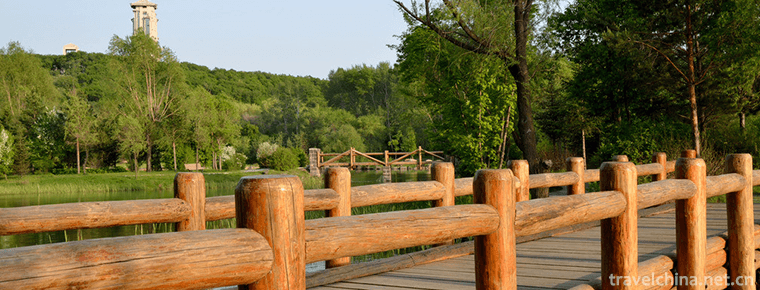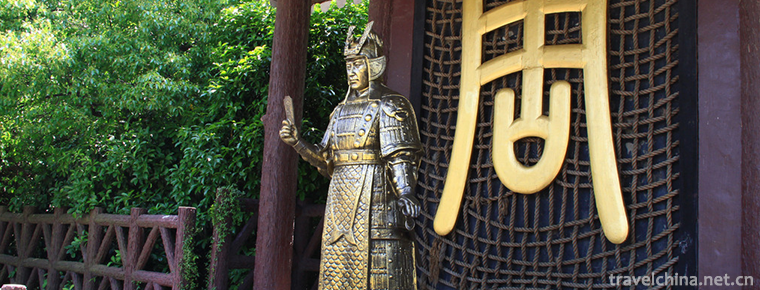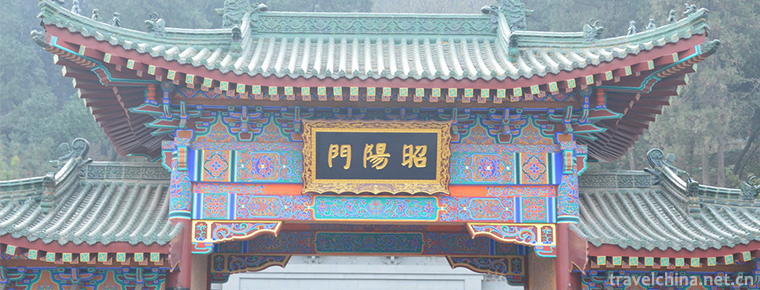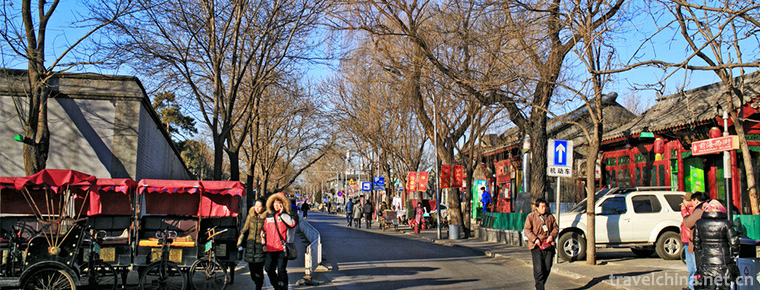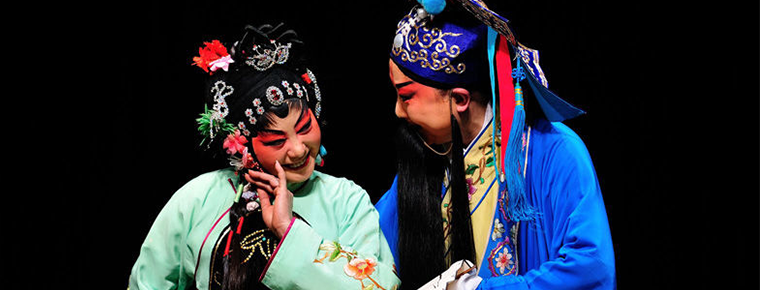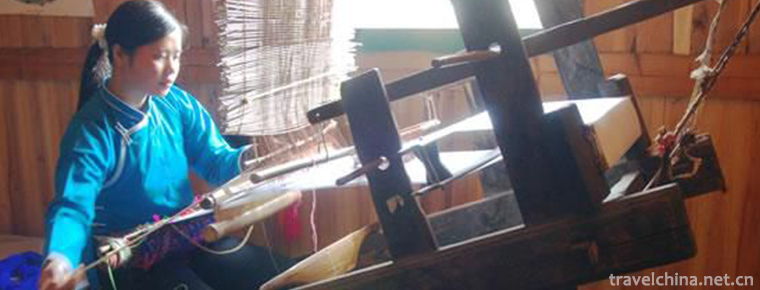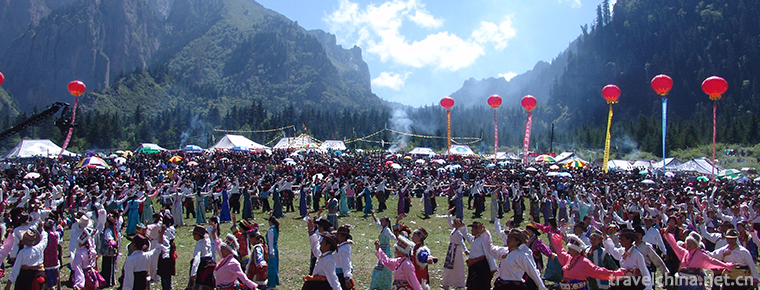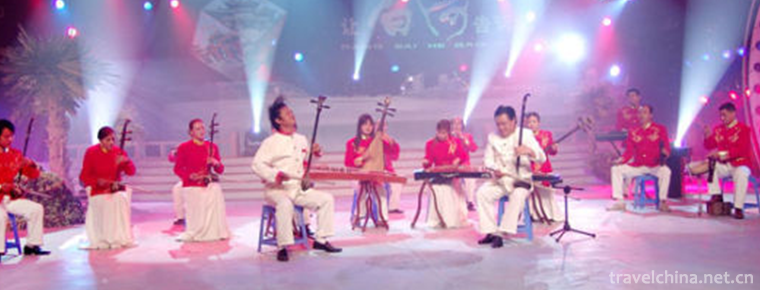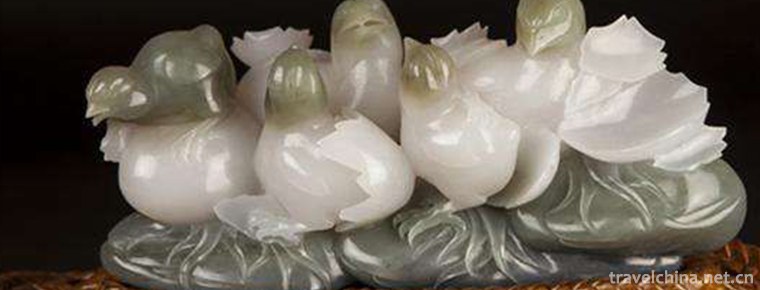Legend of Camel Spring
Legend of Camel Spring
Camel Spring is a provincial key cultural relic protection unit and a patriotic education base. Located in Jiezi Township Unity Village, with convenient transportation and direct access to tertiary oil road, it is 5 kilometers away from the county town and 140 kilometers away from Xining City. It is a tourist attraction integrating sightseeing and experiencing folk customs.
development history
It is a sacred site in the legend of the Salar Nationality. Because of a magical white camel, carrying the heavy history of the Salar people, from Samarkand in Central Asia, the sleeping spring became a white stone. Legend has it that there is a small tribe in Samarkand, Central Asia, headed by two brothers, Galemang and Ahmang, who are very prestigious among the masses. Because of the hatred and persecution of the local rulers, they led 18 people of the same clan, led a white camel, carrying the water of their homeland and a Koran, and left Samarkand looked for new paradise in the east. On their way, they traveled to the east to find a new paradise. Tianshan, through Jiayuguan Pass, around Hexi Corridor, across the Yellow River, to Xunhua territory. Through Xichanggou, Yue Mengda Mountains went to Utus Mountains. By this time the sky was dark and the white camel was lost in the vastness. The next day, they found a clear spring under the sandy slope east of the street. The lost camel was lying in the water and turned into white stone. They tried to measure the local soil and water, which was exactly the same as their native land, and settled down here. Camels who have gone through hardships lie quietly in the spring, accompanied by them day and night, the spring is clear and clear, flowing, and the four seasons are continuous, so the name of this spring is "Camel Spring". In the early 1980s, the government allocated funds to rebuild camel spring walls and gates, carve camel stone statues with granite near the springs, plant flowers and trees, and build water Xiexie stele. The reconstructed camel spring is as clear as a mirror, ripple ripple, blue sky and white clouds, reflecting it; the carefully carved stone camel stands near the spring, holding its head and chest high, lifelike. Less than a hundred steps from Camel Spring, there are Sarah Ancestral Temple Street Mosque and ancestor Galemang, Ahmang mausoleum. Two verdant ancient elms, reflecting each other, naturally cover the top of the mausoleum. They have a unique style and are often visited by tourists. Camel Spring and the adjacent Street Mosque, the Mausoleum of Galemang and Ahmang, the precious handwritten Quran, the ancient poplar of nearly a thousand years and the ancient cypress of a hundred years contrast each other, which constitute a favorable basis for the witness of the vicissitudes of the history of the Salar people and for the study of the history of the Salar people. Every year, folk diet festival, handwritten Qur'an exhibition seminar and embroidery exhibition Festival are held here.
Camel Spring is located 4 kilometers west of Jishi Town, Xunhua Sala Autonomous County, near the Jiezi Village Mosque. Although it is a small spring, it is a sacred site in the Sarah homeland and the birthplace of the Sarah people in legend.
The spring is related to the origin of the Salar people. According to folklore, the ancestors of the Salar people were originally a small tribe living in Samarkand, Central Asia. The two brothers were the heads of the Salar people. Their names were Galemang and Aho Mang, and they had high prestige among the masses. Later, because of the king's hatred, he was forced to leave his home and wander around. They took 18 people of the same clan, a white camel, carrying their homeland's water and the Koran, looking eastward for new musicians. Along the way, they crossed Tianshan Mountain, Jiayuguan Pass, Hexi Corridor, crossed the Yellow River, and rolled to the foot of Jishi Mountain. Unexpectedly, the white camel was lost in the night. The next day, they found a clear spring and a missing white camel lying on the sand slope east of the street (which had turned into white stone) and settled down here and named it Camel Spring.
Camel Spring is regarded as a holy spring by the Salar people and plays an important role in Salar culture. In the past few years, in order to protect the camel spring, the local people built a fence and iron fence near the spring, planted pine and cypress, fruit trees and flowers in the fence, and sculpted three large camel stone statues of different shapes beside the spring in the garden, and built water pavilions and pavilions. Camel Spring is a rectangular scenic spot with an area of about 3500 square meters. The central part is a pool about 40 meters long and 20 meters wide. Spring water gushes from the spring eyes in the center of the pool. The pool is about 0.6 meters deep and surrounded by cement.
Camel Spring is a precious historical relic of the Salar people. Legend has it that in the Yuan Dynasty, more than 700 years ago, Samarkand in Central Asia lived in a tribe full of heroic deeds. They are one of the Ugussalaurus. Their leaders are Ahman and Galeman brothers. The two brothers led their clans to battle and won every battle. They led the tribes to do business everywhere and made a fortune every time. Therefore, the tribe's life is getting better and better day by day, and the prestige of Ahman and Galeman brothers in the tribes is also getting higher and higher day by day. Out of hatred, the King of Samarkand plotted treachery with the princes and nobles to put their brothers to death.
The two brothers, inspired by the sages, went far away to find a happy land in the East. As a result, Ah Ho Mang and Ga Le Mang led their clans in a difficult and spectacular national migration. They took a white camel, filled a can of bright homeland water, filled a bag of fertile homeland, and brought a Koran. They waded through 29 foul waters, 29 dense forests and 29 deserts, and finally reached Wutusi Mountain on the Bank of the Yellow River in Xunhua, which is the 30th mountain they are going to climb. It was getting dark, and people were busy putting up tents and making fires to cook. Suddenly we found that the camel carrying the Sutra had disappeared. We lit torches and searched all over the hillside. At daybreak, people saw a green reed on the sandy slope east of Jiezi River. There was a pool of spring water in the reed bush. Ah! Isn't that a white camel? People ran to the spring in ecstasy. But when I ran up to him, the white camel had turned into a white stone. They looked at the mountains and rivers, densely forested mountains, purple air; the golden banks of the Yellow River, flat rivers. People take out the ratio of water to spring water in their hometown. The two springs are as clear and sweet as each other. They take out the ratio of soil in their hometown to that in the riverside. The soil in the two places is as heavy and fertile as that in the riverside. People cheered and lifted up the Koran to worship it. Oh, this is the paradise that thousands of miles seek!
Tibetan friends who have lived here for generations have repeatedly retained the brave and kind Ahmang and his people. The brothers of Mongolian herdsmen are generous and willing to give in to each other with abundant water and grass, while they drive their livestock and move to Qinghai Lake to graze. The Sarutans, led by the Ahman brothers, were happy to live here and take root. From then on, they called this pool of never-thirsty spring "Camel Spring" cordially.
Today, at the wedding ceremony of Salar youth, we can still see such a dance. Two people wear leather jackets to play camels, and the other two wear long gowns and head scarves to play Galemang and the local Mongolians. They sang, asked and answered as they danced, recalled the migration of their ancestors and their experiences along the way, commemorated the arduous journey of their ancestors in search of a happy land with vivid songs and dances, and praised the brave and unyielding character of the Salars and their deep friendship with the Mongolians.
In early spring, a smiling face appeared on the Bank of the Yellow River. The tender yellow willows swayed in the dawn. In the dense reeds, a pool of clear spring water glittered. Recently, the water in the pond was clear enough to count even the leaves of the aquatic plants that covered the bottom of the pond; among the dry reeds around it, new reed buds had sprung out of the water; and the water reflected the red buds of the elm trees, like the smallpox scattered by the first saints. In the middle of the pool, in the dim morning light, two white stones appeared on the surface of the water, one high and one low, like a pair of humps. The camel's body is lying on the bottom of the water, surrounded by green water plants, in the bubbles emerging, hidden and visible, what about the head? Whether to reach into the spring eye, the Changying water droplets constantly from the nostrils! Or deep meditation?
Suddenly, a melodious call for salute came from eight green cypress trees. Looking for fame, I saw on the top of the high Nidillo, a man dressed in a black robe and white head, turning his direction and calling out loudly for worship. Needless to say, that is the famous street mosque. The mosque has two high Ninaro towers, all of which are made of wood. Under the ancient cypress and old elm trees, there are two rectangular tombs, which are buried in Ahemang and Gale Mang. In the middle is a gathering hall facing the western Keerbai (Mecca Holy Land). It has a single-story Xieshan roof, green tube tiles, and a vase, sword and crescent moon on the roof. It is solemn and solemn. Looking at the amazing camel spring and the magnificent Arab architecture, people seem to see the two brothers of Ahman and Galeman trekking hard, and see the ingenuity of the Salar people. Sadly, during the ten years of turmoil, it failed to escape the doom of being swept away, and even the two white stones, which made people fantasize about strange things, did not know where to go.
The state has allocated more than 300,000 yuan successively to repair the Street Mosque in accordance with the form of the Hashi Grand Mosque in Xinjiang. Thirty square pillars support all sides. On the dome in the middle of the hall, a crescent moon shines brilliantly in the autumn sun. On the four Mulalian towers at the four corners, loudspeakers are installed. In the spacious hall, there are golden pearl chandeliers and flower-shaped wall lamps. On the floor, there are uniform square worship kneeling blankets. There are five or six hundred yuan in rows and rows. Under the high eaves, there is a huge plaque with eight big characters in the gold letters, "True Education pays attention to light and safeguards unity", which is sent by the people of the county and town.
Beautiful legend
Camel Spring is surrounded by dense reed bushes, as well as rose, thorn plum, Yangxiu and other flowers, as if dedicated to the arrival of guests and open. Three Mu square yard, pool water occupies an acre of land, more than three meters deep, very clear, very cool. Standing on the stone beside the camel spring, listening quietly, it seems that the sound of bells can also be heard. That is the sound of camel bells when the Salar ancestors came to Xunhua from ancient Central Asia. The legend of a white camel and the emergence of a spring have created and witnessed the vicissitudes of the nation's history. And these springs made the Salar people survive in the arid west, nourishing generations after generations of Salar people. After several generations of vicissitudes, the Salar people created the history of the nation with their hard-working, down-to-earth figures and wise minds, and also formed the culture of the Salar people today.
Because of the beautiful "Camel Spring" legend, there is a Salar folk dance, duo Ioena, people call it "Camel Dance". This dance not only has a complete story, fixed characters, costumes and props, but also tells people about the difficulties of the Salar ancestors'eastward migration with rich connotations. Particularly special in dance movements is that there is no music accompaniment, but the "camel" actors use the brass bells tied to their hands to press the footsteps of the "camel" rhythm, shaking sound. The dance plot and the folk legend of "Camel Spring" provide valuable information for the historical and cultural heritage of the Salar nationality.
Come from that distance, camel bell is long, hold you up, raise your unyielding head, through the vicissitudes of thousands of years. Salar, Salar, Salar, Salar.
When you are leaving Camel Spring, this poem of "The Mysterious Origin" may give you a long aftertaste.
Yellow sand is vast and endless.
This is a desert, a carpet made of endless yellow sand; there is no bright flower or any other color on this carpet, that is to say, there is no green plant or even no sign of life.
Only sand, sand, sand, I don't know where so much sand came from, covering the earth, and drying the endless desolation and harshness in the sky. But strangely, there is a camel spring, just on the side of a sand beam. A spring springs from the sand, and the spring water converges into a pool of blue waves, like a piece of jade inlaid in the flat and monotonous desert center.
I don't know how deep the spring is, except that it is so clear, like a mirror, which can see the clouds and stars in the sky; as deep as a person's eyes, which can penetrate the heart of people.
People - people who have been to the desert say this is Camel Spring. Because its shape is like a camel lying side by side; some say that two camels lie side by side; others say that it is like the eyes of a camel, and linked with the camel's eyes, deep, calm, pure, moist...
Anyway, because of Camel Spring, this desert is not a place of complete death. People - travelers can walk one or two hundred miles to the oasis and walk out of the desert if they insist on walking, come to the camel spring and supply a little water which is as precious as life.
What a precious spring, the spring of life! So the desert has an invisible road to business, and hundreds of thousands of square kilometers of territory has a lifeline! For hundreds of years, people have passed through this line like a needle, because with this line, they will never be lost in the vast desert.
Travellers across the desert sometimes sleep by camel springs. Campfires and springs, accompanied by a long night talk, so a legendary story spread in the ocean:
Legend has it that in the early days, there was an explorer who traveled a lot of places and found charming scenic spots. One day, he broke into the desert of death. He was riding a camel with a limited bag of water; he had no idea that the vast desert was so endless that he walked and walked, with the sun on his head and the sand burning under his feet; his sweat was almost dried out and his skin was bursting! He went to the center of the desert and could not hold on. He opened his leather bag, prepared to drink some water, and then went on. He saw his camel as he put the bag up to his lips. His camel was already exhausted and even his lips were dry and white. His heart trembled, and he quickly handed the bag to the camel's mouth, but the camel slowly put his head aside.
The Explorer drank a little water and went on. He reached where people now rest and could not walk any more. The scary thing is that there is no more water in the bag. He took a few steps and fell on the sand beam. He tried to open his eyes, but his eyelids were too heavy. He felt better only when he closed his eyes. Closing his eyes, he saw a fresh picture: an oasis springing up in the desert, with green grass and trees dotted with scarlet flowers...
When the scarlet flower withered, he woke up. When he woke up, he saw a sparkling spring under the sand beam, but his camel disappeared and disappeared forever.
Camel Spring: Legend of Never Thirsty
Camel Spring is a precious historical relic of the Salar people. It also has a beautiful legend: Legend has it that more than 700 years ago in the Yuan Dynasty, Samarkand in Central Asia, there lived a tribe full of heroic deeds. The two brothers, Ah Ho Mang and Ga Le Mang, were the leaders. The two brothers led their clans to battle and won every battle. They led the tribes to do business everywhere and made a fortune every time. Therefore, the prestige of the two brothers, Ahmang and Galemang, in the various tribes is also increasing day by day. Out of hatred, the King of Samarkand plotted treachery with the princes and nobles to put their brothers to death.
As a result, Ah Ho Mang and Ga Le Mang led their clans in a difficult and spectacular national migration. They took a white camel, filled a can of bright homeland water, filled a bag of fertile homeland, and brought a Koran. They trudged mountains and rivers, and at last they were about to cross the thirtieth mountain. Suddenly we found that the camel carrying the Sutra had disappeared and everybody looked for it everywhere. At daybreak, people saw a pool of spring water on the sandy slope east of Jiezi River. The white camel has become a white stone. Nearby has become a dense forest layer of hills, purple, golden banks of the Yellow River, flat channel. People take out the ratio of water to spring water in their hometown. The two springs are as clear and sweet as each other. They take out the ratio of soil in their hometown to that in the riverside. The soil in the two places is as heavy and fertile as that in the riverside. People cheered and lifted up the Koran to worship it. Oh, this is the paradise that thousands of miles seek!
From then on, they called this pool of never-thirsty spring "Camel Spring" cordially.


-
Jingyuetan National Scenic Area
Jingyuetan, National AAAAA Class Tourist Scenic Spot, National Scenic Spot, National Forest Park, National Civilized Scenic Spot Demonstration Site, National Water Conservancy Scenic Spot.
Views: 238 Time 2018-12-05 -
Wuxi film and television base
The Wuxi Film and Television Base of CCTV was originally built by CCTV to shoot "Tang Ming Huang", "Romance of the Three Kingdoms" and "Water Margin".
Views: 160 Time 2018-12-06 -
Huaqing Pool Scenic Area
Tang Huaqing Palace is another palace for feudal emperors in Tang Dynasty. Later also known as "Huaqing Pool", located in Lintong District, Xi'an City, Shaanxi Province..
Views: 157 Time 2018-12-12 -
Guo Moruos Former Residence in Beijing
Guo Moruo's former residence is located at No. 18, Qianhaixi Rim, Xicheng District. Originally a garden in Heling in Qing Dynasty, it became the forage yard and stables of Yixian Mansion of Prince Gon.
Views: 352 Time 2019-01-13 -
Yaoshi Scenic Spot
The Youshi Scenic Spot is located on the South Bank of Youshi Hainan, Haojiang District, Shantou City, across the sea from Jinping District. It is the first provincial-level scenic spots in Guangdong .
Views: 734 Time 2019-02-07 -
Sichuan Opera
Sichuan Opera, commonly known as Sichuan Opera, is mainly popular in the Han nationality areas of Sichuan, Chongqing, Yunnan and Guizhou provinces in southwestern China.
Views: 181 Time 2019-04-19 -
Dong Brocade Weaving Techniques
Dong brocade weaving technology, the traditional handicraft of Tongtong Dong Autonomous County in Hunan Province, is one of the national intangible cultural heritage..
Views: 152 Time 2019-04-27 -
Pot dance
Guozhuang dance, also known as "Guozhuo", "Gezhuang", "Zhuo" and so on, is one of the three major Tibetan folk dances. Guozhuang Dance is distributed in Changdu and Naqu .
Views: 132 Time 2019-05-02 -
Xiping Folk Song
Xiping Folk Song is a traditional folk song in Xiping Town, Xixia County, Nanyang City. Xiping Town, located in the hinterland of Funiu Mountain in Western Henan Province, is located in the combinatio.
Views: 213 Time 2019-07-01 -
Jade Carving in Yangzhou
Yangzhou has a long history of jade carving. Jade carving in Yangzhou reached a new peak in the Tang Dynasty, and carving and striping appeared in the Song Dynasty. During the Qianlong reign of the Qi.
Views: 95 Time 2019-07-10 -
Huanglian earth forest
Huanglian earth forest, namely the earth forest in huanglianguan Town, is a geomorphic landscape developed on a set of ice water freeze-thaw debris flow deposits. Huanglian earth forest is located in huanglianguan Town.
Views: 154 Time 2020-10-16 -
Topography and geomorphology of Suining
Suining is a hilly and low mountain area in the central part of Sichuan Basin, with simple geological structure and gentle fold. The landform type is single, belonging to the Mesozoic Jurassic strata, which is eroded, cut and accumulated by flowing water.
Views: 113 Time 2020-12-16
